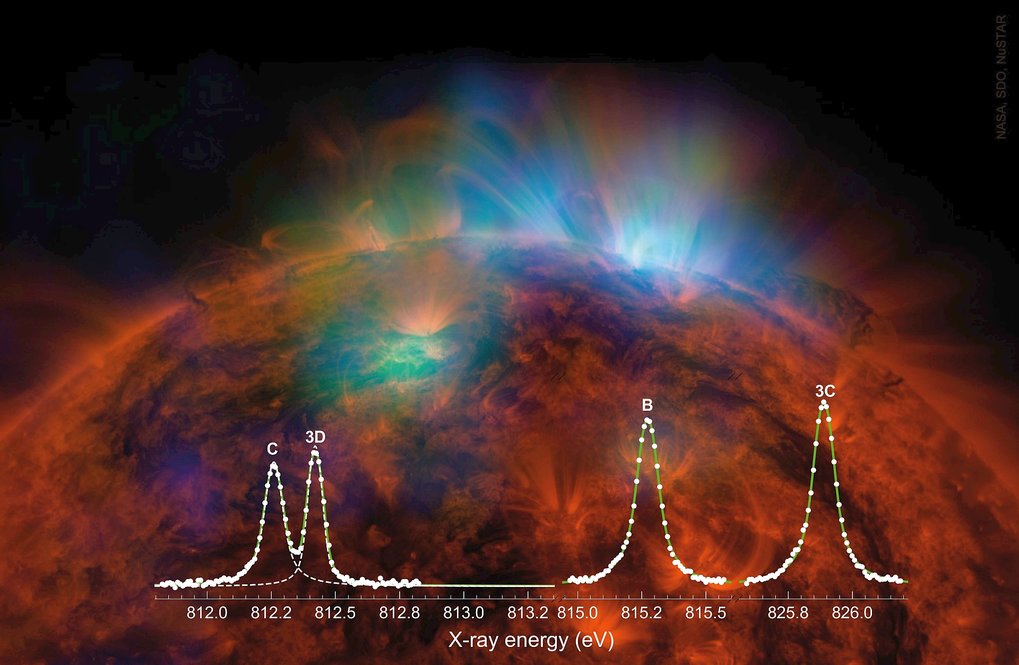Very hot gas, as found in the sun's corona or in close proximity to black holes, emits very intense x-rays. It reveals the locally prevailing physical conditions, such as temperature and density. But there is one problem that researchers have been battling with for decades: the intensity rates of important emission lines of iron measured in the laboratory do not match those calculated. This causes ambiguity over the magnitude of the gas derived from the x-ray spectra. An international team under the leadership of the Max Planck Institute for Nuclear Physics in Heidelberg has now solved the problem using an exceptionally accurate experiment: theory and experiment finally concur. In future, this will allow x-ray data from deep-space telescopes to be analysed in the underlying atomic models with a high degree of reliability.
